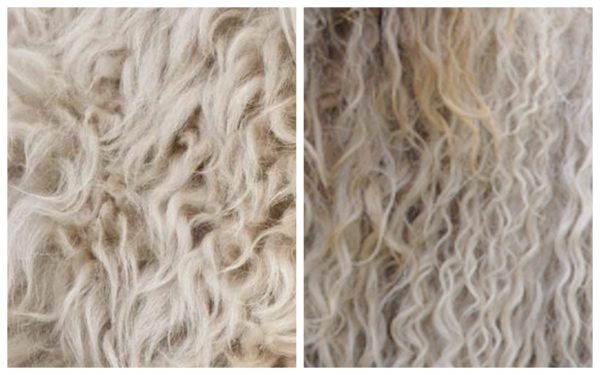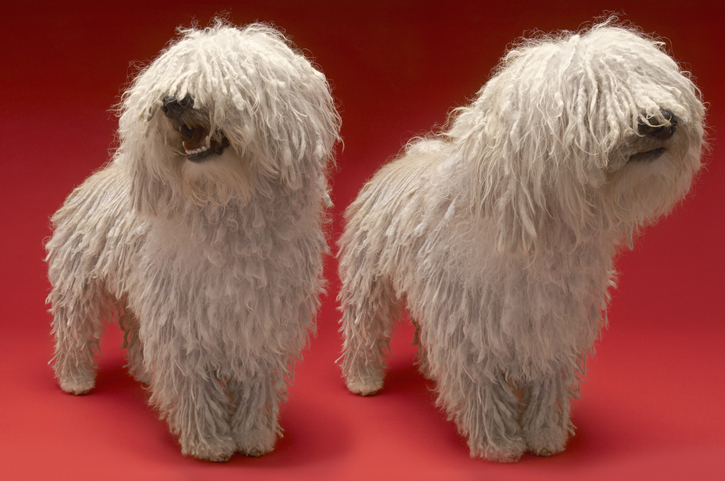
As of this writing, the AKC doesn’t recognize the Maremma from Italy, the Šarplaninac of Yugoslavia, the Tatra from Poland, or the Akbash from Turkey, but the registry does accept another LGD thought by some cynologists to be from the same genetic pool that migrating people from Western China* brought with them, and that is the Komondor:

Photo credit -IPGGutenbergUKLtd – istockphoto
Historically, the Komondor’s job on the Puszta of Hungary was to guard livestock from predators. Among the critters the Kom was entrusted to protect was the hardy Racka Sheep, a woolly ruminant with unique spiral-shaped horns that both ewes and rams possess:

Credit:Gaschwald/iStock Photo
These horns that can grow up to 2.0 feet long are the result of the interaction between length-growth and circular-growth genes. According to the Racka Sheep Society, they are the result of the dominant nature of the length-growth gene that results in the long, spiral horn. If the two kinds of growth were balanced (meaning that one gene isn’t dominant), the sheep would have horns similar to several other breeds like the Dorset Horn.
In looking at the two photos, do you notice anything similar between the Komondor and the Racka?
Ding ding ding if you noticed their coat texture. The Racka is a double coated sheep, which is to say it has a mixed fleece coat of hair and underwool. In an adult, the fleece is coarse, curly and bushy mixed with wool. Near its body, the wool becomes matted and felted in way that makes it look as if it is mop-like. This breed of sheep comes in cream-white and black, and black Rackas usually have shorter fleece, but both colored fleeces make the sheep particularly weatherproof and resistant to heat, cold, rain, and snow.
The Komondor’s mature coat also consists of a dense, soft, woolly undercoat and a coarser outer coat that is wavy or curly. The coarser hairs of the outer coat trap the softer undercoat, forming permanent, strong cords that are felt-like to the touch (italicized language comes from the breed standard). It is thought by some that Hungarian shepherds developed the breed’s unusual coat to help the dog blend in with the flock and help sheep accept the dog more easily, as well making a predator think twice about attacking a sheep since she would be unsure of whether the flock is guarded by a canine or not. Like the Racka it guards, a Komondor’s cords protects him from weather extremes, while also providing a hairy buffer should a predator attack him (the linked photo comes from the Thompson Small Farm blog).
Not all the world’s LGDs (Livestock Guardian Dogs) are white, but a good number of them are, and there is debate over whether this is to help the dogs blend in with their flock. It is an interesting discussion, to be sure.
